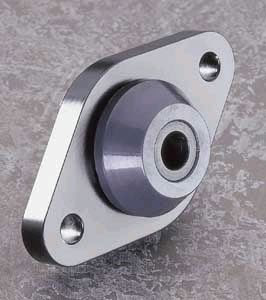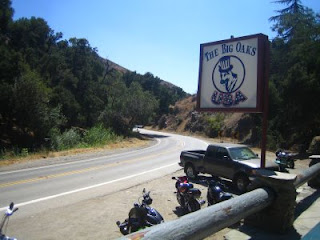 Yesterday evening, I took a ride with a gal who's been hanging out with our riding club lately. She bought her motorcycle only last January, and it was her first motorcycle ever. Since she's been riding with us a lot, I figure she's found it comfortable and likes the people.
Yesterday evening, I took a ride with a gal who's been hanging out with our riding club lately. She bought her motorcycle only last January, and it was her first motorcycle ever. Since she's been riding with us a lot, I figure she's found it comfortable and likes the people.She tells me that years ago she used to be the "property" of a local 1%er club member, and recounted her relationship with him and his buddies. There was a lot of structure in that organization, and he had responsibilities to take care of. That often contradicted with their relationship.
Today, she just wants to enjoy the freedom of riding, riding her own bike, and being free to live her own life, instead of being tied down to responsibilities and expectations.
So we were hanging out at Paradise Corners, a place moderately popular with bikers up in the Santa Rosa mountains, east of Hemet, CA. She was telling me about a womens-only club that she had considered joining. She had signed up for their activities calendar, to receive notices of their events, but never really signed up to become a member of the club. She received a note from one of their members, advising that she needs to visit their national website, become a member there, and then also apply for membership with the local chapter.
However, she was reluctant to do so because she saw the "structure" that this organization was built around. She also noticed the requirements to attend monthly meetings, and the rules of conduct, and the expectations towards maintaining one's membership in good standing. She related all this to her past experiences, even though it was a stretch to associate the two together. After she had hesitated to sign up for sometime, the club removed her subscription to the activities calendar, and that was the end of that.
All clubs have some kind of structure, even if its an absence of structure, it's still a structure at least in the sense that members have an understanding of how things work. Some people need structure in their lives, and you may not think about it, but that's a very big reason why people join clubs.
Clubs provide the framework people need to find order out of chaos. Within that framework, they can settle into a niche and gain a sense of stability. They now know how they relate to others, who has more authority than who, and what they should be doing. They can see limits and boundaries that define right and wrong.
That framework gives its members something to climb on, and eventually gain stature among their peers. They can climb the "corporate ladder" of their club and make achievements that give them a sense of pride.
The first riding club I was in had a lot of structure, while the next club after that had much less, and then the club I'm in today has even less. Perhaps that's a natural progression, but then again, I know people who seemingly have gone the opposite direction, from less structure to more.
So I explained all that to this gal who responded that she likes our way of being less structured. She feels more comfortable associating with a club that'll never impose expectations, consequences, or membership fees. To other people, they'll the see our absence of structure as a reason for saying it's not a club. But that's just a difference of opinion on what a club means each person.
I'm not exactly sure why there's people like us who don't want "structure", and why there's people who do. I look at everyone in our club and I see people who already have structure in their lives, whether they have a large family, a job at a large corporation, or service in the military. Perhaps they see the club as simply a chaotic "getaway" from the rules of order that they currently deal with.
It could be that people who hold positions of power in their jobs need to join a club that makes them subordinate as their own kind of getaway.
I suppose our club is looking for folks who already lead a structured, orderly life, and needs to hang out with a club that let's everything hang loose and let's you run at your own speed. Maybe another club is looking for people who have no structure or purpose in their lives, and needs a place to fit into.



